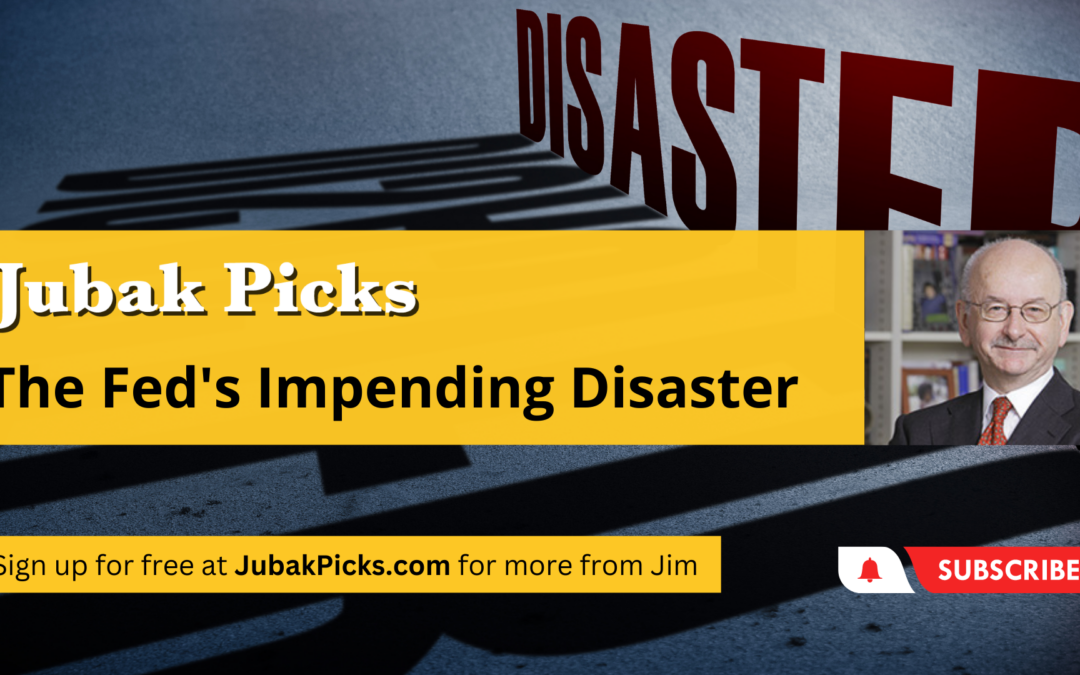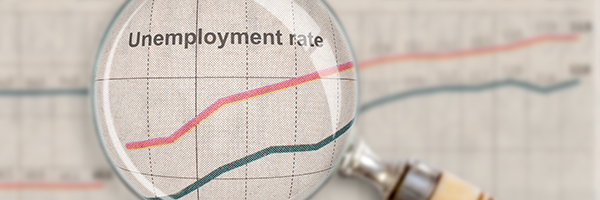
March 15, 2023 | Daily JAM |
U.S. prices at the wholesale level, the producer-price index, fell in February from January, the Bureau of Labor Statistics reported this morning. The producer-price index fell 0.1% in February from January after a 0.3% month-to-month increase in January. Will that be enough so that the Fed has an argument for NOT raising interest rates next week?

March 15, 2023 | Daily JAM, Videos |
Today’s topic is The Fed’s Impending Disaster. The CPI inflation numbers for February looked good from an annual perspective–headline at 6% and core at 5.5%–but if you look month to month, inflation ticked up slightly. In the big picture, inflation is lower, but we’re not seeing it fall at the speed the Fed would hope. The Fed wants to get inflation down to 2% and we’re currently around 5.5% core inflation–a long way off. If you look at those numbers alone, you’d expect the Fed to continue raising their rates. This is what the market was expecting just last week, projecting a 25-50 basis point increase for the March 22 meeting. The thing that puts the Fed between a rock and hard place is the Silicon Valley Bank collapse and additional banking stressors that could lead to more disasters inside the Treasury market. In February the FDIC said that insured banks had about $620 billion in undeclared losses. With $23 trillion in the banking system, $620 billion is less than 10% overall, but if it’s concentrated in certain areas, it could cause more blow-ups. We don’t know if we’ll see any big Wall Street banks go down, like Lehman Brothers back in 2008, but I am watching Credit Suisse closely, especially after the big hit to its share price this morning, March 15. Essentially, the rapid hikes in interest rates have put strains on the banking industry and the Fed will have to decide whether they will continue raising rates to fight inflation, or stop in favor of supporting banks while inflation is still high at 5.5%.

March 15, 2023 | Daily JAM, Morning Briefing, Short Term |
Shares of Credit Suisse (CS) fell this morning–if a 31% drop at the worst moment can be called “falling”–after the bank’s biggest shareholder said it would NOT put more money into the challenged bank. As of noon New York time, shares of Credit Suisse were down 24.1%. The bank’s bonds fell to levels that signal deep financial distress, with securities due in 2026 dropping 17.75 cents to 70 cents on the dollar in New York. That puts their yield at about 20 percentage points above U.S. Treasuries.

March 14, 2023 | Daily JAM, Morning Briefing |
February core inflation, measured by the Consumer Price Index, climbed from January at a faster month-to-month pace, according to this morning’s report from the Bureau of Labor Statistics. Core inflation, which excludes theoretically more volatile food and energy prices, rose at a 0.50% month-to-month rate in the month after climbing at a 0.40% month-to-month rate in January. That put core inflation on a 5.5% annual pace. This wasn’t what the Federal Reserve needed to hear as it wrestles with the problem of what to do to contain inflation still running at well above the central bank’s 2% target (and which threatens to edge higher again) at a time when the banking system is showing systemic stress brought on by the Fed’s aggressive interest rate increases. Here are the Fed’s choices.

March 13, 2023 | Daily JAM, Short Term |
Tomorrow’s CPI inflation report for February will show whether the Federal Reserve faces a very difficult task in bringing down inflation without crashing the economy (and/or the banking system) or whether the job is simply impossible. Right now economists are pointing toward impossible. The annual inflation rate is likely to have come down in February from January but the month-to-month trend is likely to be flat. Which means that inflation has stopped declining with the annual rate well above the Fed’s 2% target rate.

March 12, 2023 | Daily JAM |
Truthfully no one knows what’s going to happen as a result of the collapse of Silicon Valley Bank. Expect a lot of volatility, though, as the “smart money” tries to talk specific scenarios (watch out for shorts bearing expert commentary) and as the most likely scenario shifts from hour to hour.

March 8, 2023 | Daily JAM, Short Term, Special Reports |
This is going to take me a while to get all five steps posted. The market situation is very complicated right now and the appropriate solutions are very specific. I’m going to start with the short-term moves you need to be making NOW and then gradually extend my recommendations to cover the entire next five months. I’ve now posted Steps #1, #2, and #3

March 8, 2023 | Daily JAM, Morning Briefing |
Private payrolls increased by 242,000 in February, according to the ADP National Employment Report. Economists surveyed by the Wall Street Journal had been looking for the economy to add 205,000 jobs in the month. The February increase was well above the revised January total of 119,000 new jobs. While the jobs report issued by the Bureau of Labor Statistics doesn’t always track closely to the ADP report, the stronger-than-expected new job total in today’s data certainly suggests that Friday’s official government report could also come in hotter than expected. Right now economists are looking for the economy to add 225,00 jobs in February according to the official data.

March 7, 2023 | Daily JAM, Morning Briefing |
As the day wore on, the stock market decided that it liked Federal Reserve Chair Jerome Powell’s Senate testimony less and less. The Standard & Poor’s 500 was down just 0.72% at 11 a.m. New York time. The index closed down 1.53% for the day.

March 2, 2023 | Daily JAM |
In the four weeks through February 26, the median price for a typical home was $350,246, down 0.6% from the same period a year earlier, according to Redfin. That’s the first year-over-year drop since 2012.

March 1, 2023 | Daily JAM |
It’s not like we don’t know that these two Federal Reserve presidents favor higher interest rates for longer. But still hearing them say it did put a crinkle in stock prices today.

February 24, 2023 | Daily JAM, Morning Briefing |
The Personal Consumption Expenditures index, the Federal Reserve’s preferred inflation gauge, rose in January at its fastest pace since June. Consumer prices rose 0.6% from December to January, up sharply from a 0.2% increase from November to December, the Commerce Department reported on Friday, February 24. Year-over-year prices rose at a 5.4% rate, up from a 5.3% annual race in December. Core inflation, which excludes volatile energy and food prices, rose 0.6% from December, up from a 0.4% rise in December from Movember. Year-over-year core inflation was up 4.7% in January, versus a 4.6% year-over-year rate in December.














